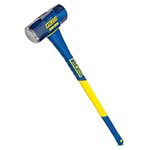Q:
I want to convert my attic to living space, but the roof slope is too low for adults to walk there. I plan to remove the rafters, sister beefier floor joists to the existing ceiling joists, and frame a new steeper roof. I’d rather not set the new roof on kneewalls because the front of my house is already pretty tall. If I set the rafters on a 2×4 plate on top of the new floor joists, I buy a foot of height, but do I still need to use rafter ties, or will the floor joists resist outward thrust sufficiently? Will hurricane clips help?
Brian Pontolilo, Northfield, CT
A:
Rob Munach, a structural engineer in Carrboro, North Carolina, replies: Rafter ties help to keep a roof together during extreme wind events, but installed properly, they also can act as compression elements to take some of the sag out of small rafters. They are not, however, designed to resist rafter thrust because they are typically too high on the rafter (usually in the top third of the roof). At the bottom of all rafter span tables, the 2006 International Residential Code has design tables for rafters and rafter ties acting to resist thrust for vaulted ceilings (section R802.5.1).
Setting the rafters on top of the floor system should provide the required rafter-thrust resistance. It’s difficult, though, to get enough toenails through the rafter’s bird’s mouth and into the 2×4 plate to provide sufficient resistance. Hurricane clips typically are designed to resist rafter uplift only and, as such, won’t provide any resistance to rafter thrust. An easy, effective way to keep rafters from spreading is to add a diagonal 2×4, as shown in the drawing, to tie each rafter to a floor joist.

Fine Homebuilding Recommended Products
Fine Homebuilding receives a commission for items purchased through links on this site, including Amazon Associates and other affiliate advertising programs.

Sledge Hammer

Flashing Boot Repair

Tajima Chalk Rite Chalk Line























